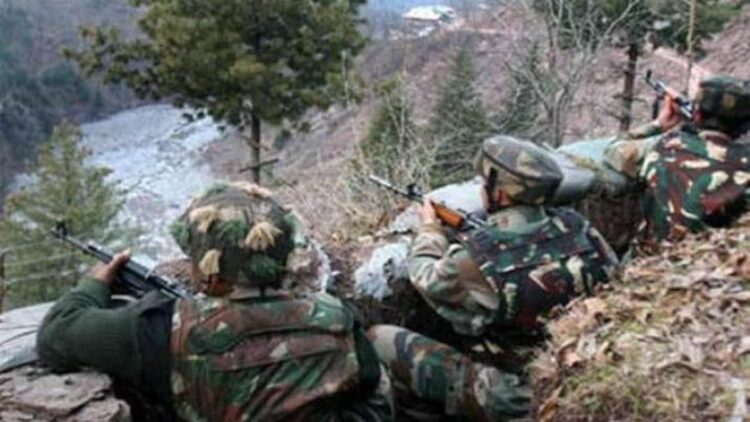Pakistani troops opened fire in eight advance sectors near the Line of Control in Jammu and Kashmir without provocation and violated the ceasefire agreement, due to which Indian soldiers also had to retaliate.
This is the 11th consecutive consecutive consecutive consecutive consecutive consecutive consecutive consecutive consecutive firing from Pakistan on the Line of Control amidst the increased tension between New Delhi and Islamabad after killing 26 people in the terrorist attack on April 22 in Pahalgam.
A defense spokesperson in Jammu said, “On the night of May 4 and 5, Pakistani Army posts opened fire across the Line of Control with small weapons without provoking in Kupwara, Baramulla, Poonch, Rajouri, Mendhar, Naushera, Sundarbani and Akhnoor areas of Jammu and Kashmir.”
He said, “The Indian Army gave quick and appropriate reply.”
Pakistani troops opened fire overnight overnight in the five border districts – Jammu, Rajouri and Poonch and Baramulla and Kupwara districts in Kashmir Valley south of the Pir Panjal ranges in the five border districts – Jammu region.
After starting firing with small arms on several posts along the Line of Control in Kupwara and Baramulla districts of North Kashmir, Pakistan rapidly extended its ceasefire violation to Poonch sector and then to Akhanur sector of Jammu region.
This was followed by small arms firing at several posts near the Line of Control in Sunderbani and Nowshera sector in Rajouri district. The firing then spread to Pargwal sector near the international border in Jammu district.
The ceasefire by Pakistan was violated despite the fact that the Directorate of Military Operations (DGMOS) of India and Pakistan spoke on the hotline on April 29 amid Pakistan’s unprovoked firing along the Line of Control (LOC) in Jammu and Kashmir.
The Indian side is believed to have warned the Pakistani side about the unprovoked firing during the shootout.
From the night of 24 April, when India suspended the Indus Water Treaty after the Pahalgam terror attack, Pakistani soldiers are starting from the Kashmir Valley and firing at various places near the Line of Control in Jammu and Kashmir.
On April 24, Pakistan shut down its airspace for Indian airlines, shut down the Wagah border crossing, suspended all trade with India and said that under the Indus Water Treaty, any attempt to turn the prescribed water for Pakistan would be considered as “war action”.
The exchange of firing has made the struggle agreement of February 2021 fruitless, with Pakistan widely violated widespread violations in several areas with a 740 km long LoC.
India and Pakistan had agreed to a fresh ceasefire on the border in Jammu and Kashmir in February 2021.
The situation has changed a lot since February 2021, when the DGMOs of India and Pakistan reiterated their commitment to the 2003 ceasefire agreement to ensure peace on the real border.
India shares a total of 3,323 km long border with Pakistan, divided into three parts: the International Border (IB), which is about 2,400 km long from the northern bank of the Chenab River in Akhnoor, Gujarat to Akhnoor, Jammu; The Line of Control (LoC), which extends from parts of Jammu to parts of Leh, is 740 km long; And the actual site position line (AGPL), which is 110 km long, divides the Siachen region from NJ 9842 to Indira Call in the north.










